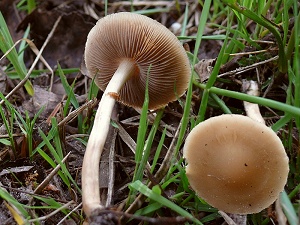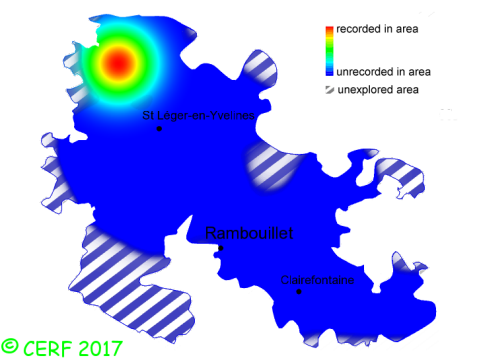| Agrocybe paludosa (J.E. Lange) Kühner & Romagn. |
|
|
|
|
|
|
The cap is cream to pale leather brown, with a central umbo. The cap surface is smooth, not viscid nor sticky. The stem is thin, same colour as cap, bulbous, with a fragile ring. The flesh is whitish in the cap, browner in the stem, unchanging; its taste is mild, not distinctive; the odour is mealy; its texture is fibrous. The gills are pale brown to tobacco brown, adnate, crowded . The spore print is light cigar brown. This species is saprophytic. It grows on the ground, in marshy meadows. The fruiting period takes place from April to November.
Chemical tests : none. Distinctive features : ochre-brown cap; ascending and membranous but fragile ring; mealy taste and odour; no mycelial cords at stem base; very close to Agrocybe praecox, but appearing only in damp places Agrocybe paludosa is rare and confined in the forest of Rambouillet, and is quite rare, more generally speaking . | ||
|
page updated on 14/01/18

